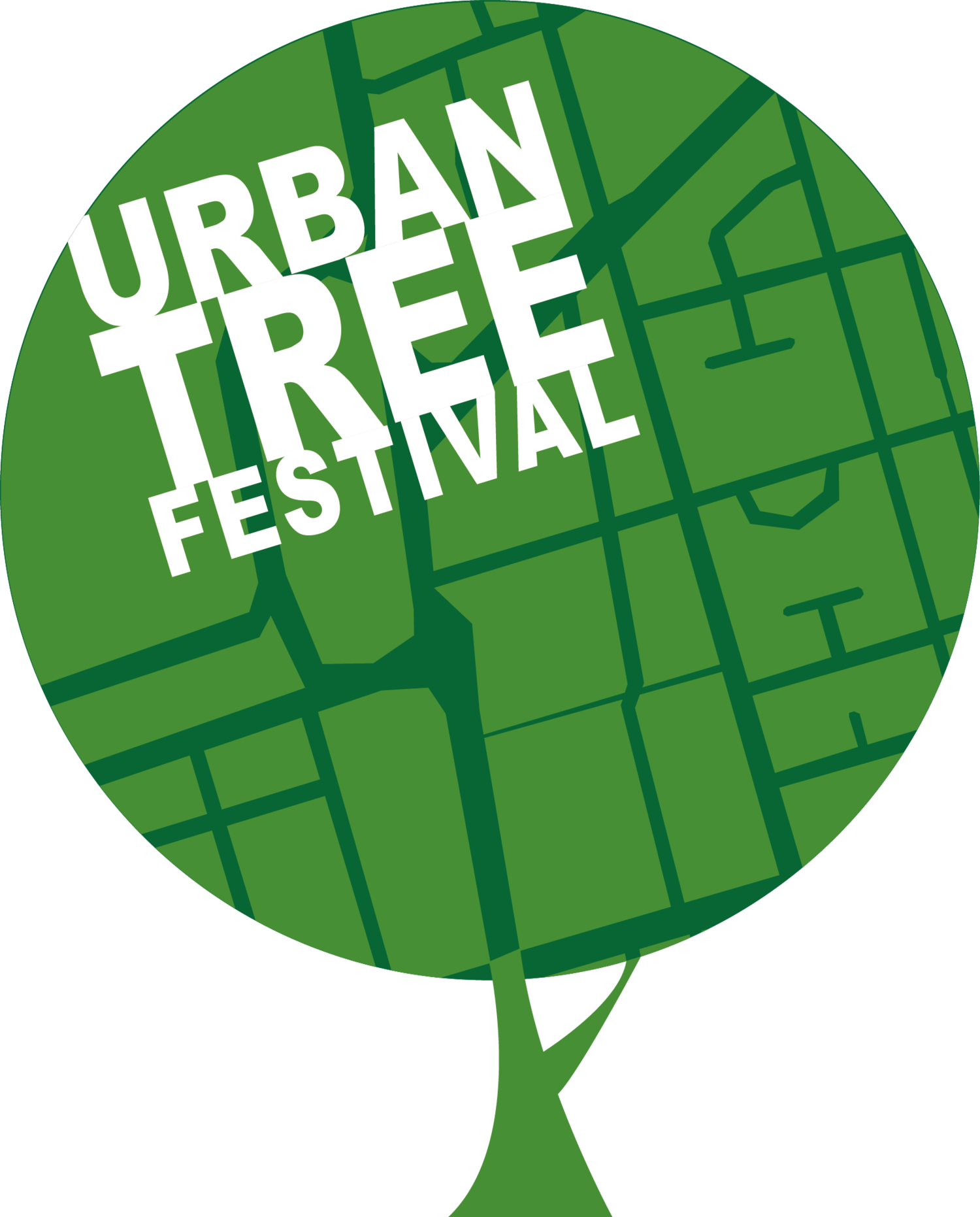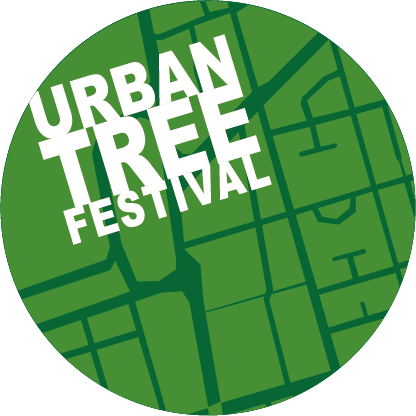An Interview with Nicola Woods
The Urban Tree Festival’s Paul Wood talks to Toronto-based tree-inspired artist Nicola Woods.
PW: I should say that we are unrelated, despite having nearly identical second names… Can you tell us a bit about yourself and what your involvement with trees is in Toronto?
NW: I’m originally from Sheffield and emigrated to Canada with my family at the age of 11. My parents’ love for nature has had a huge influence on my life and art practice. Throughout my childhood they took my brother and I on many walks, hikes and camping trips. I learnt a great deal from their encyclopaedic knowledge and enthusiastic curiosity for all the flora and fauna we encountered. My parents always made sure to bring guide books to help identify the birds or plants we encountered. As a child, I didn’t always appreciate the delays while they consulted their guidebooks, but now as an adult, I’m grateful that they taught me patience and curiosity. I can honestly say that I frequently check my Audubon Society Field Guide to North American Trees when I need help identifying trees!
I’ve been an artist since the age of two when I first picked up a paintbrush. As a child I loved to paint and draw a wide range of subject matter but was especially drawn to dragons, cats, houses, and trees (yes trees!). My parents also gave me my first camera when I was eight or nine, and so I developed a keen interest in photography from a young age. I still draw and paint, but photography is my favourite way to capture and express my visions.
Throughout my school years, I took art classes in drawing, painting, and sculpture. After high school I completed an undergraduate degree in Fine Arts at the University of Manitoba. And then in 2002 I earned a Master’s degree in Fine Art at Johnson State College and the Vermont Studio Centre.
My involvement with Toronto’s trees began in 2011 when I moved to a new neighbourhood (the Junction) and adopted a dog. I’d never had a dog before so I had no idea how much time I would spend walking outside.
Henry beside an oak tree
Over time, walking with Henry, I became more aware of my surroundings. Previously, I hadn’t noticed the trees on the city streets, but the more I walked, the more I noticed them and their presence began to resonate with me. Later in 2017 I became aware of tree identification signs attached to the street trees in the Junction.
Honey locust tree with Adopt-a-Street-Tree Sign, 2018
I was delighted to see these signs and found them very useful for expanding my tree identification skills. With a bit of research I discovered that the signs were one element of an Adopt-a-Street-Tree Program, initiated by a local tree advocacy organization and run by a dedicated group of volunteers. I was so impressed by the program that I decided to become a volunteer. Over the last few years along with other members of the volunteer team I’ve assisted with the program and spent many evenings watering street trees. In addition to my work with this program I try to help out whenever I can to advocate for trees and the city’s urban forest.
PW: You're also an artist who focuses on trees - can you tell us a bit about that and how trees inspire you?
NW: As I mentioned the first reason I turned my artistic focus to trees was the increased awareness I gained while walking with my dog. The second reason was getting a phone with a camera. Having a small, portable camera encouraged me to photograph my surroundings. Since I was often walking when there weren’t very many people on the streets, the trees became my companions. I started snapping pictures with my phone, and then continued shooting with my digital SLR camera. After a while, I realized that I had the beginnings of a new tree focused series.
Trees inspire me in so many ways. As an artist I want to capture their beauty, so in terms of my photography the physical form of a tree is my main source of inspiration. Beyond that what I find so inspiring about trees is that they symbolize so many different, admirable qualities. For instance, city trees strike me as symbols of both perseverance and shelter. Despite being surrounded by concrete and polluted air these trees continue to grow while providing a haven for mammals, birds, and insects. Trees with their mysterious beauty remind us of the cycles of life, as I observe how they change through the seasons I find solace in the fact that life keeps renewing itself and that we are part of that cycle.
PW: Can you tell us about your street tree photo series? (can you share a few images with us for this?)
The Adopt-a-Street-Tree Project in my neighbourhood inspired me to record and pay homage to the group of trees cared for by various businesses, organizations and individuals in the Junction. Since then I’ve expanded my series to encompass other parts of Toronto with the intent of showing how trees knit neighbourhoods together and bring colour and life to the city.
Honey Locust
Basswood
Ginkgo
Pioneer Elm
In my street tree photo series I employ a unique process that I describe as digital photography with a vintage twist. To achieve this I print my photographs onto transparent film and layer the image onto metal leaf. The gold, silver and copper metallic backgrounds shimmer and change according to the light conditions and resemble early photographic processes such as daguerreotypes and tintypes. Additionally, this references the radiant quality of gold metal leaf as used in religious iconography to symbolize the divine - suggesting that trees, with their ability to take carbon dioxide and pollutants out of the atmosphere, are the saviours for the climate change crisis threatening the City of Toronto and the planet alike.
PW: Can you tell us about the Adopt a Street Tree project?
NW: The Adopt-a-Street-Tree Project, initiated in 2015 by LEAF (Local Enhancement & Appreciation of Forests) is currently active in five Toronto neighbourhoods and has received support from a variety of partners and volunteers.
As LEAF states on their website the project’s aim is to assist some of the “approximately 600,000 Toronto street trees which grow in the harshest of urban conditions. They face a multitude of stresses such as limited soil and water, sidewalk salt and bicycle locks, which challenge their long-term health and survival. Stressed out trees can’t provide us with the same environmental benefits as healthy trees.” Through their research and tracking of the trees LEAF has found that the Adopt-a-Street-Tree Projects are of great benefit to the trees, especially young ones that need lots of water to thrive.
In each of the five neighbourhoods volunteers begin in the spring by canvassing business owners and individuals, signing up new tree adopters, touching base with continuing tree adopters and keeping track of the trees that aren’t adopted. Tree adopters take care of their tree by watering them as needed until the first frost. For the trees that aren’t adopted (we call them orphan trees) volunteers take care of watering and cleaning up debris around the tree. In my neighbourhood, teams of two or three people fill and then haul a large rain barrel on a cart to each of the orphan trees. We give each tree 3-4 full watering cans of water at least once a week.
Rain barrel and watering cans used by Junction Adopt-a-Street-Tree Project volunteers
Nicola Woods watering Junction trees, 2019 photo by Paul Ramses
PW: What are the challenges presented by the pandemic situation to the continuation of the project?
NW: Because of COVID-19 and the continued need for social distancing it is uncertain if the Adopt-a-Street-Tree Projects can go ahead this summer. Usually by the end of May we would be visiting local businesses and contacting individuals to ask for their support. If we can go ahead we will need to work out how volunteers can carry out canvassing and then watering the trees while practicing social distancing. In addition, the projects rely on local businesses to help adopt trees and sadly because of the pandemic, businesses all over the city are shuttered. For example, in the Junction, the Pugliese family who owned the much-loved restaurant Vesuvio have watered and cared for two Freeman Maple trees growing outside their doors. Sadly the restaurant closed on April 19; Vesuvio will be missed by both their patrons AND their trees.
Despite the current situation I am certain we will find a way to continue helping the trees.
I hope that in the midst of this difficult time people still realize how important trees are to us and that the urban forest is so vital to the health of the city. Hopefully, my art will inspire more people to adopt a street tree or join a volunteer watering team, and by doing so both the trees and their neighbourhood will benefit. We all need to work together to help urban forests flourish and thrive whether in Toronto or in other cities around the world.
Where can readers learn more about the Adopt-a-Street-Tree Projects in Toronto and your artwork? (can you include some links?)
For more information go to LEAF’s Projects section where you can find information on the Adopt-a-Street-Tree Projects in five Toronto neighbourhoods as well as their other programs including Adopt-A-Park Tree in 19 Toronto parks
*Please note that the Junction Adopt-a-Street-Tree Project is supported by the Bloor West & Roncesvalles branches of the Meridian Credit Union, Green 13, LEAF & the JAAST volunteers.
You can view my artwork on my website or follow me on Instagram, Twitter or Facebook
I will be exhibiting a new series of tree portraits in the Toronto Online Art Fair from July 2 -12, 2020.
All photographs © Nicola Woods unless otherwise noted.
Gallery of Nicola’s photography, click on the images to enlarge.



















